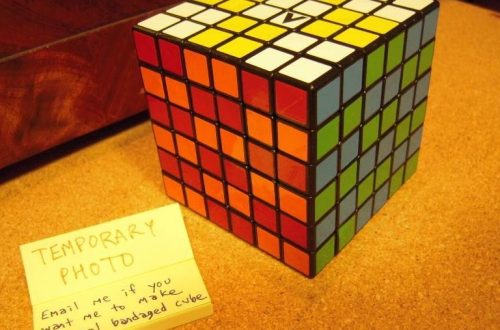The unassuming jigsaw puzzle, with its intricate pieces waiting to be assembled into a complete picture, has captivated minds for centuries. But where and when did this ingenious form of entertainment first emerge? Delving into history reveals a fascinating journey, where jigsaw puzzles evolved from educational tools to beloved family pastimes.

Part 1: A Map to Knowledge – The Educational Origins
1. Dissected Maps – The Birth of Jigsaw Puzzles:
The story of jigsaw puzzles can be traced back to the 1760s. John Spilsbury, a London map engraver, is credited with creating the first jigsaw puzzle. His invention wasn’t for entertainment, but for education. He pasted maps onto wooden boards and then meticulously cut them along the borders of countries. John Spilsbury created “dissected maps” as a geographical teaching tool. These maps allowed students to learn about the world in a more interactive way.
2. Beyond Geography – Expanding the Puzzle Landscape:
The concept of dissected puzzles quickly expanded beyond maps, captivating the imagination of artistically inclined individuals. They started creating puzzles featuring religious scenes, famous landmarks, or even portraits. These early puzzles continued to be crafted from wood, resulting in them being expensive and often considered a luxury item for the wealthy. The allure of these intricately crafted wooden puzzles grew, establishing them as a symbol of leisure and intellectual pursuit. As their popularity soared, puzzles became a form of entertainment and an instrument of visual artistry. The demand for these puzzles among the affluent sparked a thriving industry, driving the creation of more elaborate and beautiful designs. This evolution ultimately democratized puzzle-making, making these captivating diversions accessible to people from different walks of life, and ultimately paving the way for the mass production of puzzles.

Part 2: The Rise of The Jigsaw – Technological Advancements
1. The Jigsaw Saw and intr intricate Cuts:
The invention of the jigsaw saw in 1855 marked a turning point in the evolution of jigsaw puzzles. This narrow-bladed saw allowed for more intricate and precise cutting of puzzle pieces, paving the way for the creation of puzzles with more complex designs and shapes. However, the puzzles themselves were still primarily made of wood, limiting their accessibility to the masses.
2. A Name is Born – The Term “Jigsaw Puzzle” Emerges:
Interestingly, the term “jigsaw puzzle” wasn’t commonly used until the early 20th century. Before that, they were referred to as “dissected puzzles” or simply “puzzles.” The association with the jigsaw tool likely arose due to its prevalence in cutting puzzle pieces during this time. The widespread adoption of the term “jigsaw puzzle” solidified its place in popular culture.
Part 3: A Golden Age of Puzzles – Mass Production and Affordability
1. New Materials and Increased Durability:
The mid-20th century ushered in a material revolution for jigsaw puzzles! Gone were the days of puzzles susceptible to warping and wear. Plywood, a sturdier alternative to wood, became a popular choice, offering increased durability for those precious puzzle moments. But the innovation didn’t stop there. Plastic even entered the scene, providing an option for puzzles that could withstand enthusiastic little hands. These new materials weren’t the only upgrade. Advancements in printing technology blossomed alongside them. Puzzle images exploded with vibrant colors and intricate details, making the completed picture even more stunning and the assembly process even more visually rewarding.
2. Mass Production and The Rise of Puzzle Crazes:
The combination of new materials, improved printing techniques, and the invention of die-cutting machines made mass production of jigsaw puzzles a reality. Die-cutting machines allowed for the creation of precisely shaped pieces that fit together perfectly, replacing the time-consuming hand-cutting methods of the past. These advancements, coupled with a growing demand for family entertainment, propelled jigsaw puzzles from niche luxury items to a household staple. The early 1900s witnessed a golden age of jigsaw puzzles, with companies like Parker Brothers releasing iconic puzzles that captured the public’s imagination.
Part 4: Jigsaw Puzzles Today – A Modern Pastime for All Ages
1. Diversity and Customization:
The world of jigsaw puzzles offers a huge variety for all ages. There are puzzles for everyone, from kids to adults. Kids can enjoy dinosaurs and Disney princesses. Adults can tackle beautiful landscapes and historical scenes. The difficulty levels are just as varied. Beginners can start with a gentle challenge. Experts can find puzzles with thousands of pieces. This variety makes jigsaw puzzles a great activity for everyone.

2. A Timeless Activity – Beyond Entertainment:
In today’s digital age, jigsaw puzzles stand out as a cherished pastime for people of all ages. They offer a welcome escape from the constant stimulation of screens. Whether you’re tackling a puzzle on your own or collaborating with family and friends, the process fosters connection and teamwork. And there’s nothing quite like the satisfaction of that final piece clicking into place, completing the picture and bringing a sense of accomplishment. But beyond the fun, research suggests jigsaw puzzles may even be good for your brain! Studies point to potential cognitive benefits, including sharper problem-solving skills, improved memory function, and enhanced spatial reasoning. So next time you’re looking for a way to unwind, challenge yourself, and maybe even boost your brainpower, grab a jigsaw puzzle and rediscover the simple pleasures it offers.
Part 5: The Future of Puzzles – A Bright Outlook
1. Digital Puzzles and Technological Integration:
The future of jigsaw puzzles seems bright, with technology potentially playing a role in enhancing the experience. Digital versions of jigsaw puzzles are already available, offering a convenient and portable option for puzzle enthusiasts. These digital puzzles could potentially integrate features like difficulty levels that adapt to the user’s skill, hint systems, and even the ability to create custom puzzles from personal photos.
2. A Timeless Appeal – A Legacy of Learning and Entertainment:
Whether digital or traditional, the core appeal of jigsaw puzzles likely remains unchanged. The satisfaction of piecing together a complete picture, the mental stimulation provided by the challenge, and the opportunity for relaxation and connection are timeless aspects that continue to resonate with people of all ages. Jigsaw puzzles remind us that some of life’s greatest pleasures come from simple, analog experiences. So next time you’re looking for a way to unwind, challenge your mind, or connect with loved ones, reach for a jigsaw puzzle and embark on a journey of discovery, piece by captivating piece.


